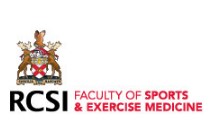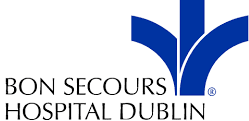Knee Arthroscopy
Knee Arthroscopy
What is a Knee Arthroscopy?
A Knee arthroscopy is a type of keyhole surgery to examine and treat problems inside the knee joint. Two small incisions (5mm-8mm) are made at the front of the knee. One incision is for a camera that will aid the consultant in viewing the inside of the knee. The second incision passes instruments that are required during surgery.
What does it treat?
This technique can be used for cartilage, meniscus and ligament operations. Due to the small incisions made minimal disruption is made to tissues in the knee resulting in reduced post operative pain and wound management. It also enables a quick recovery period. Generally arthroscopy surgeries are day cases, enabling patients to go home on the same day.

Diagnosis
The requirement for a knee arthroscopy can done through diagnostic imaging such as MRIs and x-rays.
Risks of Surgery
All operations involve an element of risk. Those involved in a knee arthroscopy will be discussed with you by Mr Jackson and include:
- Infection (<1%).
- Blood clots also known as a deep vein thrombosis (DVT) and pulmonary embolus (PE) (<1%).
- Numbness of the skin around the wounds.
- Nerve or vessel damage ( <1 in 1000).
Day of Surgery
- On admission you will check in at the reception area and be asked to confirm your details for your medical file. A member of the admissions department will accompany you to the day ward waiting area.
- A member of the nursing staff will bring you into the ward. They will complete all the required checks (blood pressure, pulse, etc), allergy status to any medications, medical and surgical history. It is important to give the nurse as much detail as possible regarding your current medical status and if any previous issues with anaesthetics.
- You cannot eat or drink anything for 6 hours prior to surgery so you will generally be fasting from midnight (for a morning operation) or 6am (for an afternoon operation). This includes chewing gum.
- An anaesthetic nurse will complete a checklist with you on the ward and accompany you to theatre.
- You will meet Mr Jackson and the anaesthetist in the anaesthetic room prior to the operation. The anaesthetist will again ask you all the same questions as the nurse and anaesthetic nurse completed on the ward to ensure all information has been provided.
- Once the surgery has been completed, you will wake up in the recovery room and will return to the ward after a period of time.
- Once post operative checks (blood pressure, pulse, wound, diet) have been completed by the nurse, a physiotherapist will explain exercises that are to be completed at home and provide confidence for using the crutches. A member of the nursing staff will change your dressing if required and provide documentation for discharge. This will include a prescription and wound instructions.
- Mr Jackson and his clinical practice nurse will come speak to you on the ward prior to discharge.
General advice
Length of stay is generally 6 hours.
Return to driving is generally recommended once you are off the crutches and feel can safely make an emergency stop.
Flying is not recommended for 6 weeks after surgery (particularly long haul flights of >4 hours) to minimise the risk of a deep vein thrombosis.
Wound is generally closed using steristrips (paper stitches). This will be clarified by nursing staff on discharge. These can be removed 12-14 post operatively. You do not need to attend your gp for removal of steristrips.
Showering is not permitted until 24 hours after surgery. Cling film can used to keep the dressing dry.
Returning to work is dependent on the type of work (office based 1 week, manual work 2 weeks). This can be discussed with Mr Jackson.
You are required to have someone come collect you after the surgery. The anaesthetic remains in your system for 24 hours. It can inhibit your reaction time and you may also feel drowsy for this period.
Follow up
- Mr Jackson will meet you on the ward after surgery. He will also send a letter to you detailing the surgery and its findings.
- The follow up appointment is at 2 weeks. You will meet Mr. Jackson’s specialist physiotherapist and practice nurse.
- The physiotherapist will examine the movement of the knee and provide guidance on the next stages of rehab.
- The practice nurse will assess the wound, pain management and provide reassurance in relation to any queries.
- Further follow-ups will be on a patient by patient basis depending on the clinical presentation.










